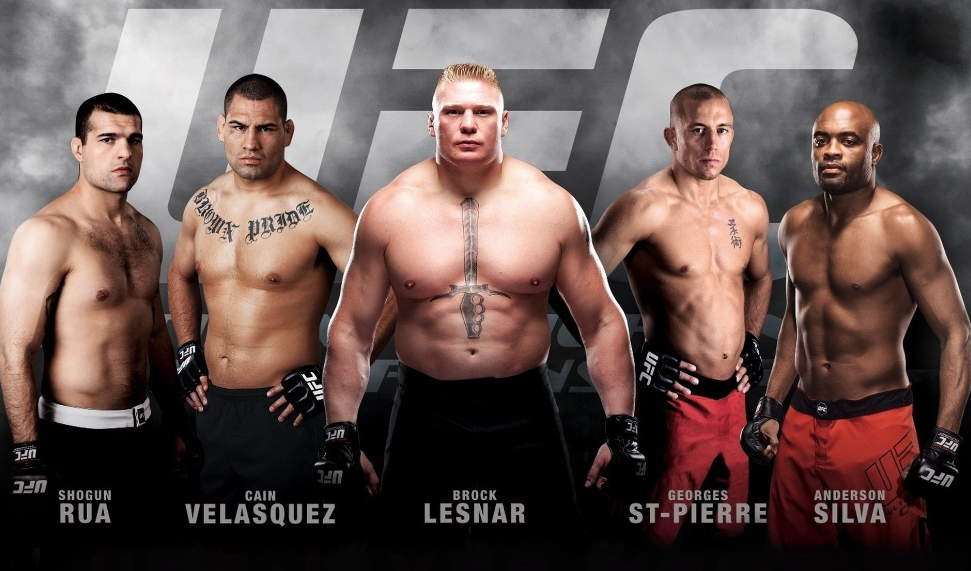Combat sports have captivated audiences around the world for centuries, offering a unique blend of physical prowess, strategy, and unrelenting competition. These sports have a profound impact on culture, uniting diverse communities and transcending national boundaries. Among the many combat sports, two have stood out prominently in the modern era: the Ultimate Fighting Championship (UFC) and boxing. In this article, we will see UFC vs boxing to compare and contrast these two dynamic and influential disciplines, examining their historical evolution, rules and regulations, fighting styles, fighter attire, weight classes, rankings, and more.

Historical Evolution of UFC and Boxing
To understand the appeal of boxing and its stark differences from the UFC, we must delve into the annals of history.
Boxing and Its Historical Significance
Boxing, in its various forms, has been a part of human culture for millennia. Ancient civilizations like the Greeks and Romans engaged in combat sports similar to what we now know as boxing. The Marquess of Queensberry Rules, introduced in the mid-19th century, laid the foundation for modern boxing, emphasizing the use of gloves, timed rounds, and other regulations. This historical backdrop reveals the disciplined and time-honored nature of boxing as a sport.
The Rise of the UFC and the History of Mixed Martial Arts
The UFC represents a more recent phenomenon in the world of combat sports. Founded in 1993, the UFC was a revolutionary concept that pitted fighters from various disciplines against each other. Mixed martial arts (MMA) has been practiced in various forms around the world, but the UFC introduced it to a global audience. The sport embraced a free-form, anything-goes approach in its early days, where fighters with vastly different skills would clash inside the octagon. As MMA evolved, rules and regulations were introduced to ensure fighter safety while maintaining the essence of the sport.
Parallel Development of the Two Sports in Different Eras
It is worth noting that boxing and the UFC developed in different eras, influenced by the cultural and societal norms of their times. Boxing’s rise coincided with the emergence of the modern sports industry, while the UFC emerged in an era characterized by innovation and a thirst for new and exciting forms of entertainment. These distinct historical contexts have left indelible marks on both sports, shaping their identities and rulesets.
Differences Between UFC and Boxing

Here’s the list of difference between UFC and boxing:
Rules and Regulations
Boxing
Boxing adheres to a set of rules and regulations that emphasize the art of striking with fists. Fighters are limited to punching while wearing gloves and adhering to specific weight classes.
Boxing matches are divided into rounds, each lasting three minutes, with one-minute breaks in between. Scoring primarily relies on the quality and quantity of punches landed on the opponent.
Clinching and ground fighting are discouraged, and fighters must maintain a strict set of rules regarding headbutting, low blows, and other infractions. Referees closely monitor the action, intervening as needed to ensure safety and fairness during bouts.
UFC
The UFC’s rules and regulations have evolved over the years to prioritize fighter safety while maintaining the essence of mixed martial arts (MMA). UFC permits a vast array of fighting techniques, including striking, grappling, and submissions.
Unlike boxing, there are no fixed rounds in UFC fights, resulting in a more continuous and fluid engagement. Scoring considers effective striking, grappling, cage control, and octagon management. Fighters must adhere to weight classes and wear open-fingered gloves, shorts, and mouthguards.
The UFC maintains a strict anti-doping policy and employs referees to enforce the rules during bouts, ensuring a controlled yet dynamic environment for fighters.
Fighting Styles
Boxing
Boxing primarily focuses on the art of striking with fists. It hones the skills of jabbing, hooking, and delivering precise, powerful punches. The sport places a high premium on footwork, head movement, and defensive techniques, emphasizing a fighter’s ability to evade incoming blows while landing effective strikes.
Boxers perfect the sweet science of delivering and avoiding punches, which requires exceptional speed, accuracy, and timing. Clinching and ground fighting are discouraged in traditional boxing. This specialization in striking and defensive skills has created a unique and enduring appeal, resulting in a sport celebrated for its grace, strategy, and the sheer thrill of the sweet science.
UFC
The UFC encompasses a broad spectrum of fighting styles, earning its reputation as a diverse and multifaceted combat sport. Fighters in the UFC hail from various martial arts backgrounds, including wrestling, Brazilian jiu-jitsu, Muay Thai, kickboxing, and more. This diversity allows for a dynamic blend of striking, grappling, and submissions, making fights unpredictable and thrilling. The emphasis on versatility and adaptability means fighters must excel in multiple disciplines.
UFC combatants often switch seamlessly between striking and grappling, depending on the situation, making it a complex and ever-evolving sport that demands a well-rounded skill set.
Fighter Attire
Boxing
Boxing fighter attire adheres to tradition and simplicity. Boxers don gloves that protect their hands during strikes, favoring a minimalist design. They don shorts that promote freedom of movement, crucial for precise footwork and punching.
A mouthguard is a mandatory safety accessory, safeguarding their teeth during intense combat. Traditional boxing attire maintains its classical charm, emphasizing practicality over personal branding, unlike the UFC, where fighters often wear attire that reflects their unique identity and style, giving them a distinct visual presence in the ring.
UFC
In the UFC, fighter attire showcases a blend of functionality and personal branding. Fighters wear open-fingered gloves specially designed to offer hand protection while facilitating grappling and striking.
The attire includes snug-fitting shorts, ensuring mobility during the fast-paced action inside the octagon. Mouthguards are crucial for dental safety, guarding against potential injuries. What sets the UFC apart is the freedom fighters have to choose their attire, including walkout gear and shirts, enabling them to express their individuality and build their personal brand.
Weight Classes
Boxing
Boxing offers a comprehensive array of weight classes, allowing fighters to compete within specific divisions tailored to their weight. The sport encompasses weight classes ranging from the towering heavyweight division to the compact strawweight category.
Prominent divisions include heavyweight, light heavyweight, middleweight, welterweight, lightweight, featherweight, bantamweight, and flyweight. The extensive range ensures that boxers face opponents of similar size, minimizing the risk of significant weight disparities.
Fighters often choose a weight class that suits their natural size or engage in weight cuts to fit a particular division, enhancing their competitiveness. Boxing’s well-structured weight classes facilitate fair and balanced matchups, contributing to its enduring global appeal.
UFC
The UFC offers a wide spectrum of weight classes, accommodating fighters of varying sizes and body types.
The organization’s commitment to inclusivity has led to the development of numerous divisions, including heavyweight, light heavyweight, middleweight, welterweight, lightweight, featherweight, bantamweight, and flyweight, among others. This extensive range allows fighters to compete against opponents of similar size and weight, promoting fair competition.
Notably, the UFC introduced several lower-weight divisions, like the strawweight division, to attract skilled fighters and cater to fans’ diverse interests. The flexibility and diversity in weight classes contribute to the UFC’s universal appeal and ensure a level playing field.
Fighter Rankings
Boxing
Boxing often features fragmented ranking systems. Various governing bodies such as the WBA, WBC, IBF, and WBO independently rank fighters within their respective weight classes. This fragmentation can lead to conflicting rankings and controversies. The complexities in boxing’s ranking systems have, at times, left fans and fighters perplexed about who the true champion is within a weight division. Despite this, these rankings continue to play a crucial role in matchmaking and determining championship fights, even in a decentralized environment.
UFC
The UFC employs a centralized and transparent fighter ranking system. These rankings provide a clear hierarchy within each weight class, making it easier for fans and fighters to understand who the top contenders are. The rankings are managed by the UFC, ensuring consistency and reducing confusion. This system allows fighters to see their path to a title shot and encourages competition to climb the ranks. The UFC rankings have become a valuable tool for fighters and fans alike in understanding the competitive landscape.
Round Length
Boxing
Boxing follows a more traditional format with rounds lasting three minutes each, accompanied by one-minute breaks. This concise round duration places a premium on precision, speed, and strategy, emphasizing the art of striking. Boxers need to strategize and execute their game plan within this brief timeframe, making each second count. The compact round length in boxing maintains a rhythm and intensity that defines the sport while also highlighting the significance of defensive skills and ring awareness in managing the clock effectively.
UFC
In the UFC, rounds have a duration of five minutes each, interspersed with one-minute breaks between them. This longer round length encourages fighters to exhibit a more well-rounded set of skills, as it tests their stamina and adaptability. Championship fights in the UFC, however, often extend to five rounds instead of the standard three, intensifying the challenge and endurance required. The lengthier rounds contribute to the unpredictable and fast-paced nature of UFC bouts, keeping fans on the edge of their seats.
Conclusion
In summary, UFC vs boxing reveals distinct characteristics that set these two combat sports apart. The future of both sports appears bright as they continue to capture the imagination of fans worldwide. As these sports evolve, they will continue to leave a significant mark on the sporting world, captivating audiences with their unique blend of athleticism, strategy, and unyielding determination.

Nancy is a journalist with passion for technology. In her 12 years of experience, she has crafted some of the most detailed pieces that describe the importance, benefits, and progress happening in the technology world.













